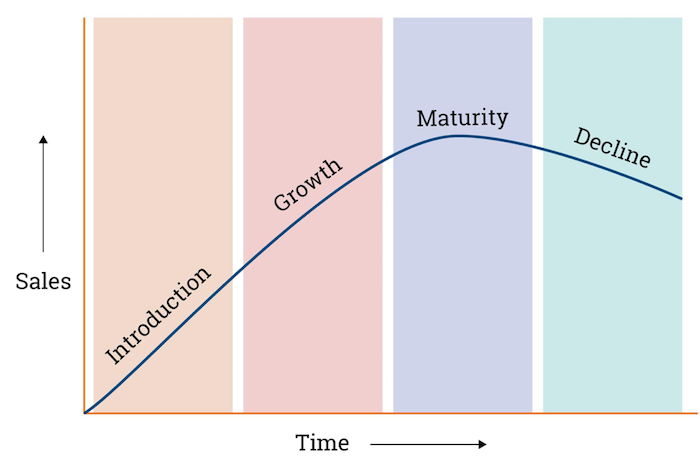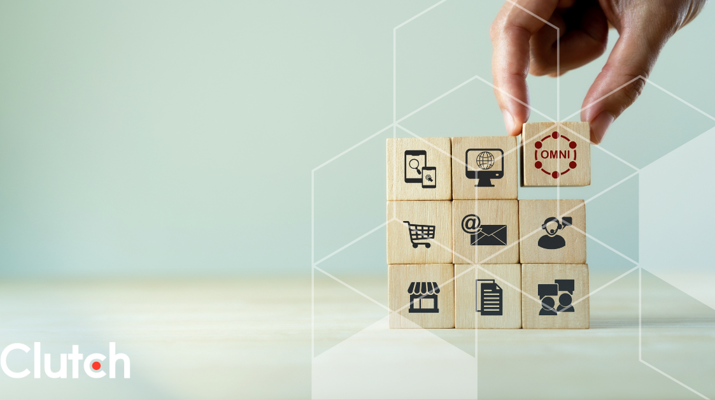![How to Create a Digital Marketing Budget [With Template]](https://img.shgstatic.com/clutch-static-prod/image/resize/715x400/s3fs-public/article/cbefcf801b6c486982d781482f9a654f.png)
![How to Create a Digital Marketing Budget [With Template]](https://img.shgstatic.com/clutch-static-prod/image/resize/715x400/s3fs-public/article/cbefcf801b6c486982d781482f9a654f.png)
Updated December 11, 2024
While market demand can influence your inventory turnover and product pricing, a good marketing strategy can help you ride the waves and ultimately sell your product. The best way to tie your inventory and marketing strategy together is with effective product life-cycle management (PLM).
UPDATED: February 4, 2022
The product life cycle, a model for small business owners, is based on the assumption that any new product released into the market will go through similar stages of introduction, growth, maturity, and decline. While the duration and scope of each stage may vary, the business strategy must remain consistent.
Looking for a Digital Marketing agency?
Compare our list of top Digital Marketing companies near you
The product life cycle is heavily associated with marketing, but it can help small business owners create new products, strategize pricing, and understand current industry trends.
The product life cycle is important in marketing because it helps define and determine strategies related to a particular product.
According to subjectquery.com, it works as “a forecasting tool, planning tool, control tool, and estimated for profits.”
Businesses developing new products need to explore how to manage a product life cycle and all of its stages.
The 4 stages of the product life cycle are as follows:
This is the initial stage when your product is introduced into the market. Sales are slowest during this stage, as product awareness has not yet been created.
Unfortunately, most products don’t move beyond this stage. Your pricing strategy during this stage will depend on each individual business. For instance, a lower price can help your business grab consumer attention and penetrate the market.
The general rule, if the competition is high and demand is moderate, is to price the product low and increase the price as demand increases.
If you have low competition and high demand, your business can afford to price high and quickly recover costs that went into production.
The growth stage has the potential to generate a lot of sales and attention. While your product can bring in great returns, there are some drawbacks to this stage.
For one, your competition may take notice of your product and try to replicate it with lower prices. They also may work on creating a better version of your product. In both instances, your business would have to spend a bit more to meet the demand.
The best way to tackle such challenges is to either strategically lower your pricing to appeal to new customers or to increase your marketing spend. In case doing so impacts your budget, you can always opt for an alternative financing option.
At this stage, your product has reached saturation, or maturity in the market.
The demand for your product isn’t as high as it was in the growth stage, as most of your customers already have your product. Competition is high, with several businesses replicating your product with added features and marketing their version’s “uniqueness.”
The best strategy for pricing is to offer discounts at this stage and simultaneously work on other additions to the product.
In the final stage of the product’s life cycle, sales begin to decrease. Businesses must decide whether they want to discontinue the product.
A product reaches the decline stage for several reasons, such as the competitor’s products getting more attention, consumers losing interest, or your profits reaching a point at which they can no longer be considered substantial.
It’s important to differentiate between whether the product has actually reached the decline stage, or if it’s just facing a temporary sales dip.
At this stage, you can lower the prices. There are several strategies for doing so, such as discounts. You can also try bundling, where several products in the decline stage are bundled together at lower prices. Lowering prices helps push out these products and increase sales.
Remember, your business strategy must remain consistent, even if each stage varies in length and scope.

Source: Reliant Funding
Through the stages of Introduction, Growth, Maturity, and Decline, your pricing strategy and marketing plan will vary, but your overarching business strategy will remain the same.
Although maintaining low prices may seem like the best strategy throughout every stage, you will need to recoup production costs and make a profit. Anything lower than that can negatively impact your overall business.
Product lifecycle management (PLM) is the process of managing products at every stage of development.
The basic goals of PLM are simplicity and flexibility. All information should be clear, and any additions to the product should be optimized by ensuring that they don’t force you to start from scratch.
Good PLM ensures that all processes are cohesive and minimize waste. A comprehensive process is product-centric and signifies the best chance of success for a business.
While there are many PLM models, the following steps are the most widespread.
The BoL stage includes everything from initial product conceptualization to development. Initial development includes all the requirements, testing, and concepts necessary to make a product.
Regardless of your industry, the BoL stage is a must. You will lay out all specifications, processes, and supply needs for your product.
The MoL comes post-manufacturing. At this stage, your product is in the hands of the customer; it is distributed, used, and serviced.
You can now collect data regarding sales, failures, maintenance rates, and customer experiences for future development.
The EoL stage is when your product has reached decline, and users no longer have any use for it. For example, when the latest version of an iPhone or any technical device is released, their older counterparts start becoming obsolete.
At this point, you recycle, retire, or dispose of your product. Companies should log the parts of the product that might be useful for future products.
Here is how the three stages of PLM play out:

Image Source: Reliant Funding
Cohesiveness keeps the process product-centric and gives the product a better chance of success in the marketplace.
Based on an investment study by Accenture, these 4 steps can help your business successfully manage your product life cycle:
See how these will best fit your business processes.
All life cycle processes, metrics, and data should be carefully studied and evaluated for their effectiveness. This ensures that all metrics are measuring what they should, and any disconnect between processes is corrected and streamlined.
To align your overall strategy, it is important to select the right product management framework that will benefit your company's growth and goals.
A few relevant metrics that measure the product’s performance through the 4 life cycle stages should be linked to priorities for all branches of the business. Without this, how you manage your product will be inefficient.
The results from the framework’s metrics can be used as an investment planning tool to decide how to rearrange the business’s funding. All business stakeholders can take action based on the metrics provided by the PLM framework, benefitting all key parties.
To incorporate the PLM framework into the entire business rather than a silo project, hire a team to ensure the framework remains sustainable and adds value to the business.
Pros of a Product Lifecycle Management System:
Cons of a Product Lifecycle Management System:
For the most part, all pros outweigh the cons, meaning that many businesses can benefit from this process.
Despite a few limitations, the product lifecycle management model provides incredibly helpful insights. It’s become the single source of truth for managing all aspects of the product, from introduction into the market to its retirement.
At its core, PLM centralizes all product data, which in the long run can help decrease costs, reduce compliance risks, increase productivity, and drive revenue.
Using a PLM software provides a single platform to manage and view all data, which can be especially useful when teams are spread across different locations.
The benefits of PLM have been proven to be concrete, and its results are replicable for most businesses.
Explore how product life cycle management can work for your business with a verified marketing agency today.
Additional Reading
![How to Create a Digital Marketing Budget [With Template]](https://img.shgstatic.com/clutch-static-prod/image/resize/715x400/s3fs-public/article/cbefcf801b6c486982d781482f9a654f.png)

